Can You Offer Draw on Mtgo
Last updated on November 10, 2021
Authored by Spencer Falor-Ward and David Royale

Witherbloom Campus | Illustration by Alayna Danner
Magic: The Gathering, a collectible card game by Wizards of the Coast, is almost 30 years old. Its popularity continues to grow and for good reason. It's arguably the best game, full stop. Granted, I am speaking from a biased viewpoint; I love Magic and I have been playing it for the better part of 25 years.
One aspect of the game that helps maintain its success is that there are loads of ways to play. Whether you're brand new to the game, you've been playing for years, you want something that you casually play from time to time, or you just want to work towards becoming a member of a professional league, there's an MTG format for you!
In the world of Magic, we use the term "format" to refer to the different forms of the game. I'll tell you about the most popular formats and whether they're played with the OG physical cardboard cards, on MTG Online, on MTG Arena, or a combination of the three.
What is a Format?
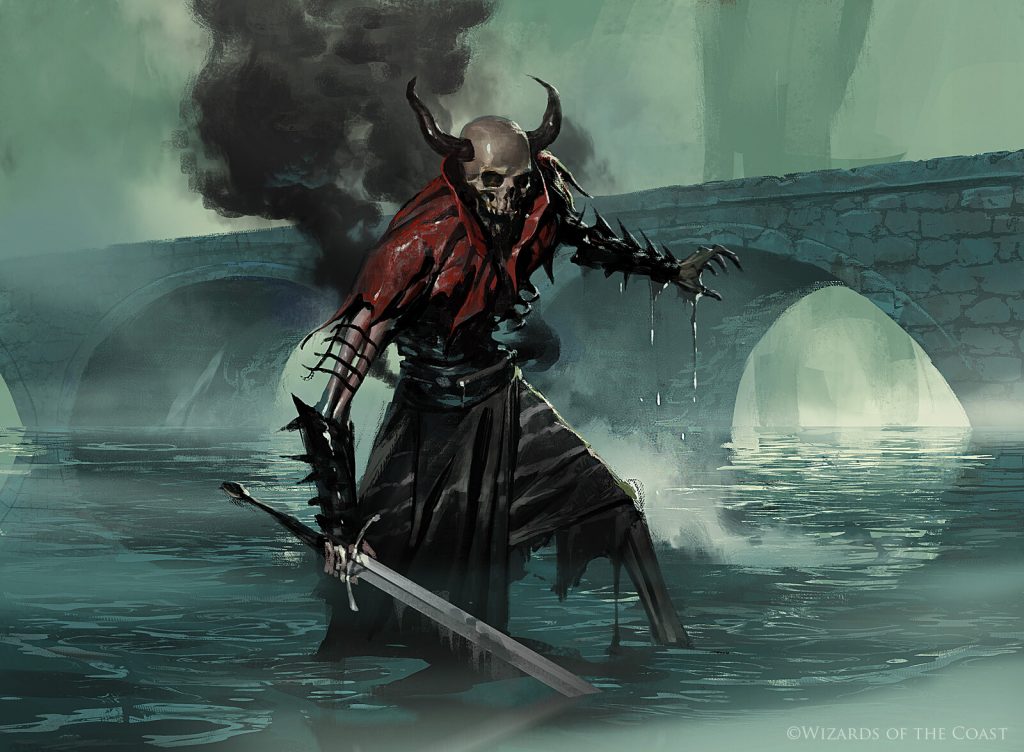
Gutterbones | Illustration by Grzegorz Rutkowski
A format is a subset of rules and guides on how to play the game to give direction to players for both the competitive and casual scene. These rules are built so there's a different taste to each format to avoid monotony between them and ensure balance. These regulations include rules on which sets you can play, your deck size, the number of players, card legality, and life totals. As far as card legality goes, each format has its own set of banned and/or restricted cards, which is updated and revised by Wizards every once in a while.
Magic also allows you to decide if you want to play with new and fresh sealed product or if you want to play with your pre-built decks. These two options are called Limited and Constructed, respectively. Both can be played on the casual and competitive scene.
Constructed
Constructed is the most popular form of MTG. As a player, you bring a deck that's been put together or "constructed" from a collection of cards. The collection of cards can be from one or many sets.
Constructed decks have a minimum size of 60 cards, meaning your deck must be at least 60 cards. However, there is no maximum deck size, with the one caveat that you must be able to shuffle your deck without assistance. All constructed decks can have a sideboard with a maximum size of 15 cards.
A deck typically consists of 36 spells and 24 lands. Constructed allows you to play a maximum of 4 copies of any spell (with certain exceptions) and any number of basic lands.
Due to the use of any cards within a series of sets, successfully constructed decks are focused on their strategy for winning and synergy among cards. These decks are usually composed of the strongest or best cards.
Limited
Limited is a form of MTG where your pool of cards is limited, so it's not just a catchy name. As a player you're provided a small pool of cards, typically this is either 45 or 84 cards, and it's your task to create a deck out of that pool.
Limited decks have a minimum size of 40 cards. The limit to the maximum deck size is the same as with Constructed. A deck typically consists of 22 to 23 spells and 17 to 18 lands. Unlike Constructed, there is no limit to the number of copies of a card you can play in your deck. Your sideboard is composed of all the cards in your pool that you aren't playing in your main deck.
Interestingly, when Dr. Richard Garfield created MTG, he envisioned that it be played similarly to limited, with a focus on the fact that a player may only have a relatively small pool of cards to build a deck. As a result, some players believe limited is the truest form of the game.
Constructed Formats

Gamble | Illustration by Rudy Siswanto
Constructed has 10 official formats, three of which are multiplayer.
All single player constructed formats adhere to the same deck construction and gameplay rules. The difference is the sets that create the format's "legal" card pool. The larger the pool of cards, the greater the number of powerful cards you can work with to build a deck. This dramatically changes the strategy of the games and the overall experience of the format.
Standard
Standard is the format in which you use the most recent sets released by WotC.
Wizards releases four new sets each year. When the new fall set comes out, the four oldest sets currently in Standard rotate out, meaning they're no longer legal in Standard. No set is legal in Standard for more than two years. It keeps the format fresh with ever-changing deck choices. It's the only format that's considered a "rotating" one.
With the release of each new set, and especially when rotation occurs in the fall, the format has the potential to change as new decks are created, card synergies are discovered, and the popularity of decks wax and wane. This creates an ever-shifting balance and a dynamic metagame. It's the main reason that Standard is the widest played competitive format.
If you're new to MTG, Standard is probably the format that you'll start with. Thankfully there's an abundance of info out there to guide you directly to the highest performing decks and how to play them.
Another benefit of the popularity of Standard is that it's playable in paper, on MTGO, and MTGA.
Modern

Stumpsquall Hydra | Illustration by Grzegorz Rutkowski
Modern is a format that WotC created in response to players' desire for fresh gameplay. All sets starting with Eighth Edition through the most recently released set make up Modern.
A larger number of cards to choose from gives you access to more powerful cards which means lots of top-tier decks can exist at the same time in Modern. These decks have concentrated game plans; some are heavily thematic like the classic elves and humans, where all the creature spells are either elves or humans and many unique synergies apply to these cards. Others are combo decks where the strategy is based around two or three cards that will outright win the game once played. Some decks can win so quickly that the game is basically over by turn 3, while others take control of the game to the point where your opponent is locked out of playing any cards and their only option is to concede.
The number of style choices in Modern decks gives you more opportunity to find one that you click with. The format doesn't change as frequently as Standard does, and you can look forward to playing any new deck that you like for a long time without needing to get tons of new cards to keep it strong.
Just like Standard, there's a wealth of info out there to help you find the top-tier decks and how to play them.
Modern is playable in paper and on MTGO. It's not on MTGA because many of the sets that make up the format came out before the digital platform's release, and the cards aren't part of the card pool. Yet.
Pioneer
Pioneer, along with Historic, is one of the more recent formats. Its scope ranges from Return to Ravnica to the most current set. This format gives you the option of playing with a pool of cards that's larger than the current Standard, but not as large as Modern.
Pioneer gives players who've been playing for the past several years a chance to use and revisit their favorite cards from past sets. The format has been referred to as "Modern-lite" because of its smaller pool and relatively lower power level. If you're looking for decklists and strategy we have some here.
Pioneer is playable in paper and on MTGO. It's not on MTGA for the same reasons as Modern.
Historic

Kalemne's Captain | Illustration by Tomasz Jedruszek
Historic is the newest format created by WotC and it was developed for MTG Arena. It comprises all of the sets that have been released on MTGA, so Ixalan forward. Historic is the first non-rotating format on the digital platform. It adds variety to the constructed options and gives you the ability to play more powerful decks and true combos that may not be an option in the current Standard. Look no further than here for some decklists.
Historic is played primarily on MTGA, but you could definitely play it in paper as well. It's not available on MTGO.
Legacy
Legacy is one of three eternal formats. This means that you can play with cards from the most recently released Standard back to Alpha, the first MTG set ever released. Other than a handful of strictly casual sets, of course. Being able to play with, essentially, all cards ever printed has led to the top-tier decks in Legacy existing on a power level greater than almost every other format. Legacy is often considered a turn 2 format because decks are either winning the game by then or have made the first major play that will set them up to win the game in the next few turns.
The top-tier decks in Legacy don't change frequently, even less so than the previously discussed formats. There are many well-known names like Storm, Show and Tell, Elves, Dredge, Reanimator, Tron, Death and Taxes, and High Tide. Once you find a deck that you enjoy, you can play with it for years as you master its intricacies. The complexities and unique play styles of each deck in Legacy create a skill-intensive gameplay experience full of fun card interactions that aren't seen in other constructed formats and fuel the popularity of the format. Here are some decklists.
Legacy is playable in paper and on MTGO. It's not on MTGA because so many of the older sets and cards are not available.
Vintage

Ghost of Ramirez | Illustration by Grzegorz Rutkowski
The reason the decks in Legacy are on a power lever greater than almost every other format is because of Vintage. Arguably the most complex constructed format, Vintage is another eternal format like Legacy. Unlike Legacy, there are no cards that have been banned for being too powerful. A premier example of this is the famous group of cards known as the Power 9.
These cards define the format and can allow games to end as early as turn 1. The appeal of performing the pinnacle of power plays in MTG has made Vintage a fan favorite format. Many Vintage players say that once you jump the format's complexity hurdle and get the cards, it's the best format. If you want to join the Vintage community, here are some decks to get you started.
Vintage is playable in paper and on MTGO. I'll let you take a wild guess as to why it's not on MTGA.
Pauper
The final instalment of eternal formats, Pauper is the most accessible constructed format for players. You play with only commons, but from every set ever printed. This huge pool of playables provides you with tons of powerful cards to make the format as tactical and enjoyable as any other constructed format.
One of the largest pulls to Pauper is the cost of entry. With all the legal cards being at common rarity, it's cheap to get your hands on a top-tier deck. It's less than $45 for a deck in paper and less than $30 for a digital version on average. It isn't hard to find a deck you like, buy all the cards, and have a competitive edge as a new Pauper player.
Pauper is also appealing because the generalized power level brought on by using only commons means that homebrew decks make up a larger percentage of the format.
Pauper is playable in paper and on MTGO. Just like the other eternal formats, though, it's not on MTGA.
Commander
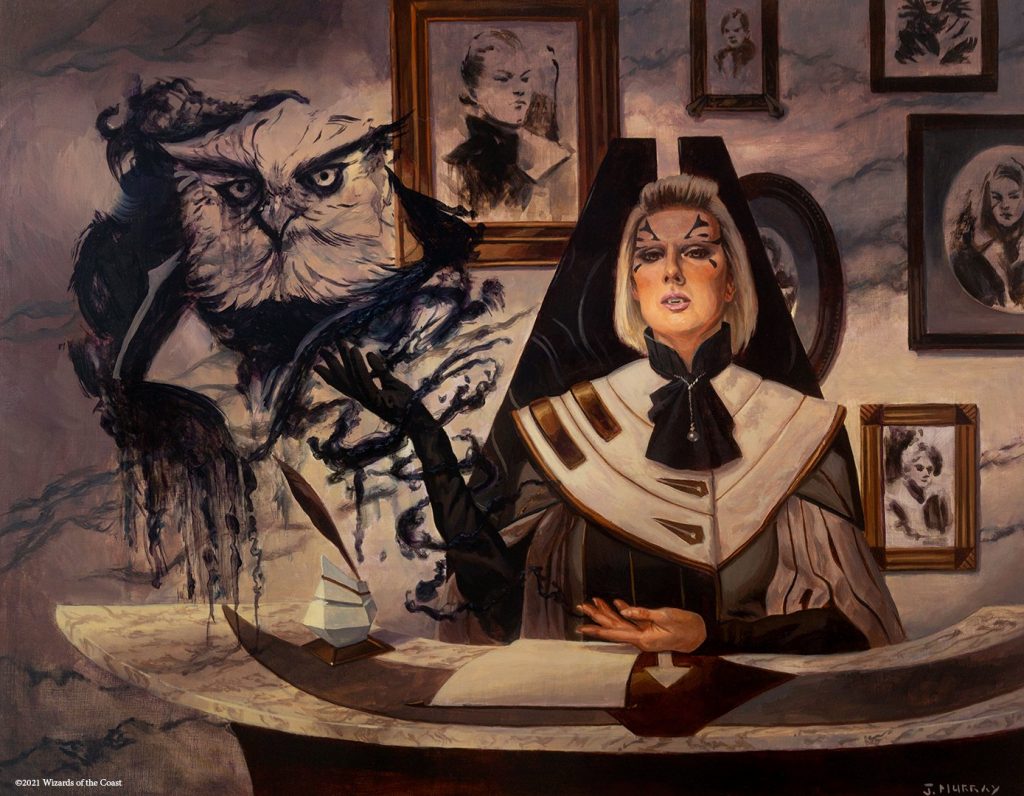
Tenured Inkcaster | Illustration by Jake Murray
Commander is one of the newest forms of Magic. In each deck you choose a legendary creature or a planeswalker with the commander ability to be your "commander." Then you build a 99-card deck that, other than basic lands, has no duplicates of a card, making it a Singleton format. Any card from all of MTG is legal to play in your deck (technically making it an eternal format), other than the format's banned and restricted cards.
There are a few things about gameplay in Commander that are unique. Your commander starts in the "command zone," a special section of the battlefield. You can cast your commander from the command zone as you would any other spell during your turn, bringing it to the battlefield where it behaves like any other creature. If your commander dies, it goes back to the command zone, where it can be recast at a tax of an additional 2 generic mana per time it was sent back to the command zone.
Each player starts with 40 life. When playing a multiplayer game, one of 3 or more players, it's a free-for-all. A player loses if their life total reaches zero or if they've been dealt 21 or more combat damage by the same commander over the course of the game. The last player alive is the winner.
Commander has become one of the most popular and largest growing formats since its inception. Players love it because of all the fun interactions between cards and big fancy plays that their commander allows. Players also enjoy the political dealings and strategy that arise when playing in a multiplayer game.
Commander is playable in paper and on MTGO. It's not on MTGA (yet). Check out some decklists here.
Brawl
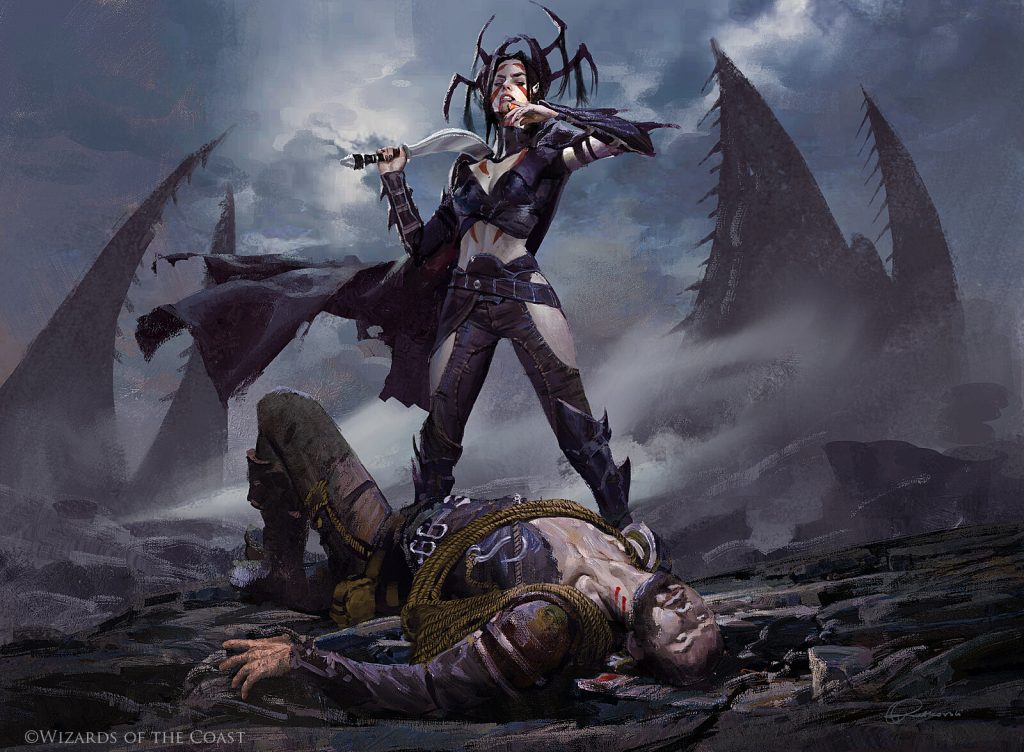
Mind Drain | Illustration by Grzegorz Rutkowski
Brawl is a variant of Commander. It plays with only Standard-legal cards, with any legendary creature or any planeswalker (no specific commander ability needed) allowable as your commander. Decks also play with 59 cards, with no duplicates, in addition to the commander.
Gameplay is also similar to Commander, except that you start with 25 life in a two-player game or 30 life in a 3-or-more-player game. A player only loses if their life total reaches zero, no commander damage rule.
Brawl evolved out of a desire to provide more variation to the Commander game. It's popular for the same reasons that players enjoy Commander.
Brawl is playable in paper, on MTGO, and on MTGA. Check out some decklists here.
Two-Headed Giant
Two-Headed Giant is the original multiplayer format. Two-player teams play against each other sharing a life total of 30. It's typically played as a variant of a specific Constructed or Limited format.
When played as one of the Constructed formats, only four copies of non-basic land are allowed between both players' decks. When played as a Limited format, both players pool all their cards together to construct two decks. Otherwise, the normal deck construction restrictions for the given format apply.
Gameplay is the same as any other format except for when a card has the text "each opponent" or "each player." In these cases, each player on a targeted team is affected, doubling the card's effect.
Two-Headed Giant is a tournament sanctioned format, but it's played casually most of the time. It's a beloved format by the MTG community because of the team camaraderie and sociability. As of now, it's only playable in paper. No digital options in MTGO or MTGA, unfortunately.
Limited Formats

Ruthless Ripper | Illustration by Clint Cearley
There are two types of Limited format: Draft and Sealed. While they have many similarities, it's their subtle differences that leads to strategic and worthwhile gameplay.
Draft
Draft comes in two parts. The first generally involves a group of 8 players and three packs of cards from the specified set per player. Each player opens their first pack, picks a card, and then passes the remaining cards to the player on their left. Cards are picked like this until all cards from the first packs have been drafted. The process repeats for the second and third packs, with the direction of the passing changing to the right for the second pack and then back to the left for the third pack. At the end, each player will have drafted a pool of 45 cards.
The second part is the deck construction and gameplay. There is as much strategy in playing the "drafting" part as there is in the gameplay. Learning how to read the draft table to identify what colors or deck archetypes are open, learning which cards are worth taking and when you should pick them are keys to being successful. For many players, the drafting aspect is the main reason they play.
The beauty of Draft is that it can be a whole new experience each time you play, both in the draft and the games. On top of that, the draft strategy is different for each set and solving the puzzle of how to draft a set is a game all its own.
You can draft in paper, on MTGO, and on MTGA. And you can experiment with draft for free, using Draftsim's namesake draft simulator, right here.
Sealed
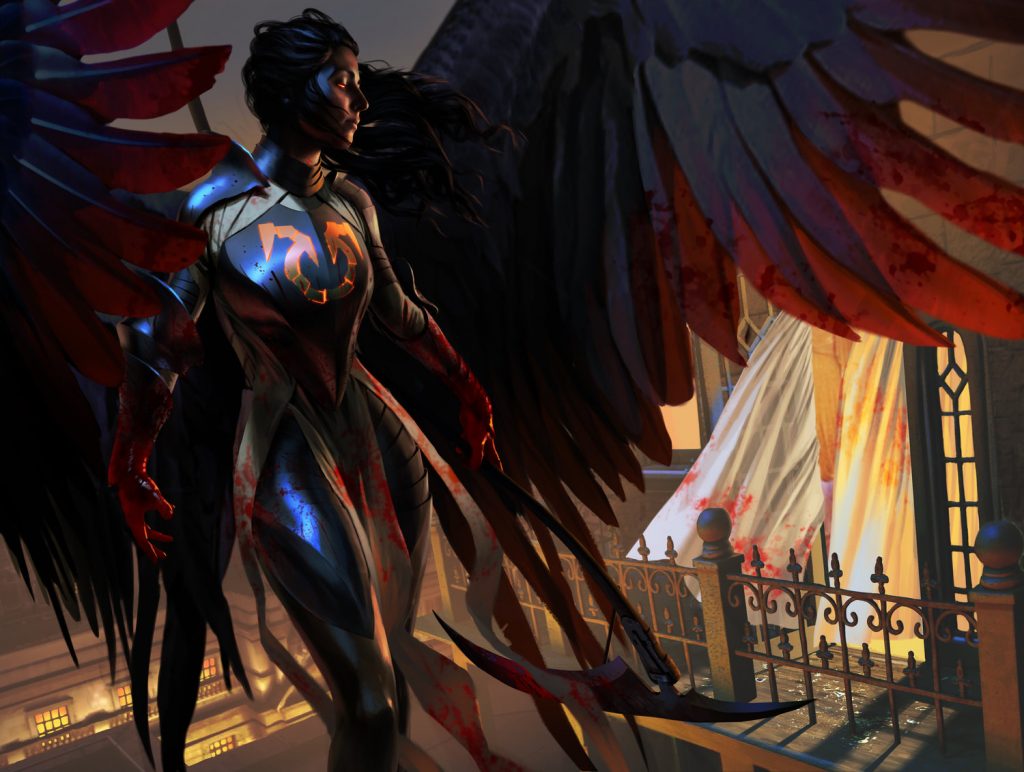
Angel of Deliverance | Illustration by Joseph Meehan
In Sealed you're given six packs of cards from a given set and then decide how to make the best 40-card deck. Knowing what cards are good from the given set, whether or not the set supports fast aggressive archetypes or slow controlling ones, and fundamental deck building skills are the best ways to give yourself an edge. It isn't uncommon to find your pool has more than one playable deck. When playing a BO3 match, changing decks between games may be the optimal strategy.
Sealed and draft might play with the same cards, but a card that's good in one may not be good in the other. If you're bouncing between the two limited formats, you should recalibrate your value of cards for each, which is easier said than done.
Sealed is one of the purest ways to play MTG. It's focus on pure fundamentals and straight-forward acquisition of cards makes it the perfect format for new players. Limited tournaments usually have Sealed as the first part of the tournament.
You can play Sealed in paper, on MTGO, and on MTGA. And you can also generate sealed pools for free on our draft simulator.
Casual Formats
If you just want to play MTG for the love of playing a great game or you want to play the game with a different perspective, then some of the casual formats may be interesting to you. These casual formats are played for fun and aren't part of the competitive scene. They're played in paper and through direct challenges or an occasional WotC hosted event on MTGO or MTGA, as card availability permits.
Constructed
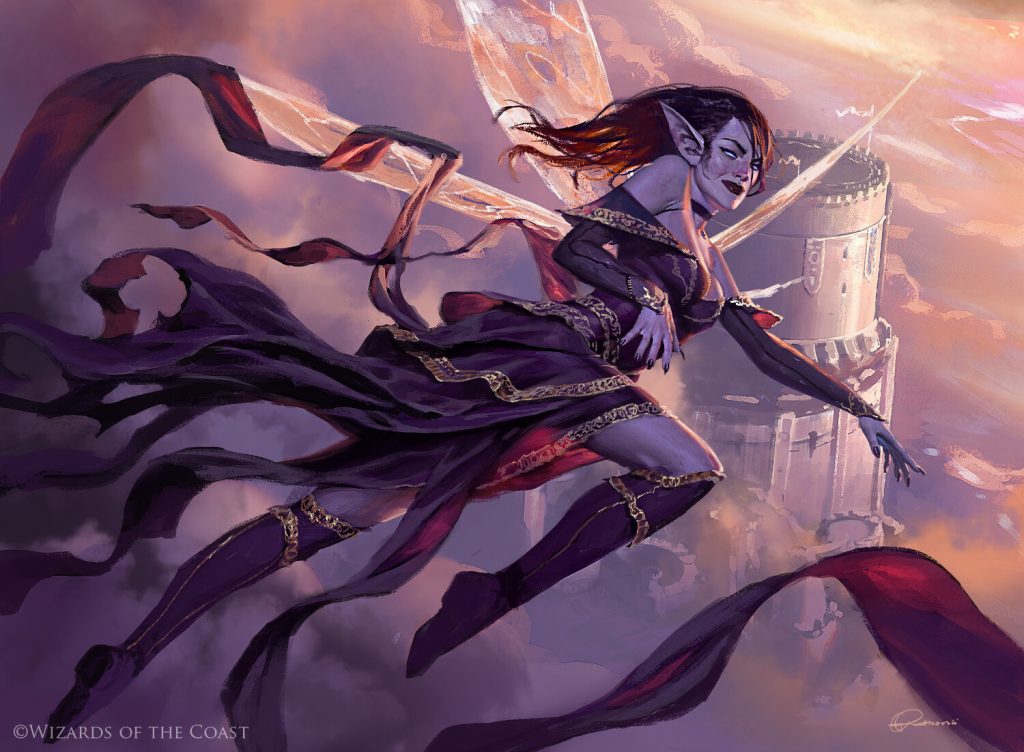
Alela, Artful Provocateur | Illustration by Grzegorz Rutkowski
Peasant
Like Pauper, Peasant uses only common cards from throughout MTG's history. What makes it unique is that it allows you to play with up to five uncommons in your deck.
Artisan
Existing in both Standard and Historic forms, Artisan is an MTG Arena-only format that lets you play exclusively with commons and uncommons.
Frontier
Frontier allows you to play with only sets legal from Magic 2015 onward.
Singleton
Singleton is a format where only one copy of each card in a deck, other than basic lands, is allowed.
Tribal Wars
Tribal Wars requires that one third of your deck be of a single creature type.
Old School
Old School is a series of formats that are defined by the sets that you're allowed to play with, all of which were printed before the legal sets in Modern. For example, Old School '93 – '94 only allows sets printed during the first two years of MTG.
Free for All
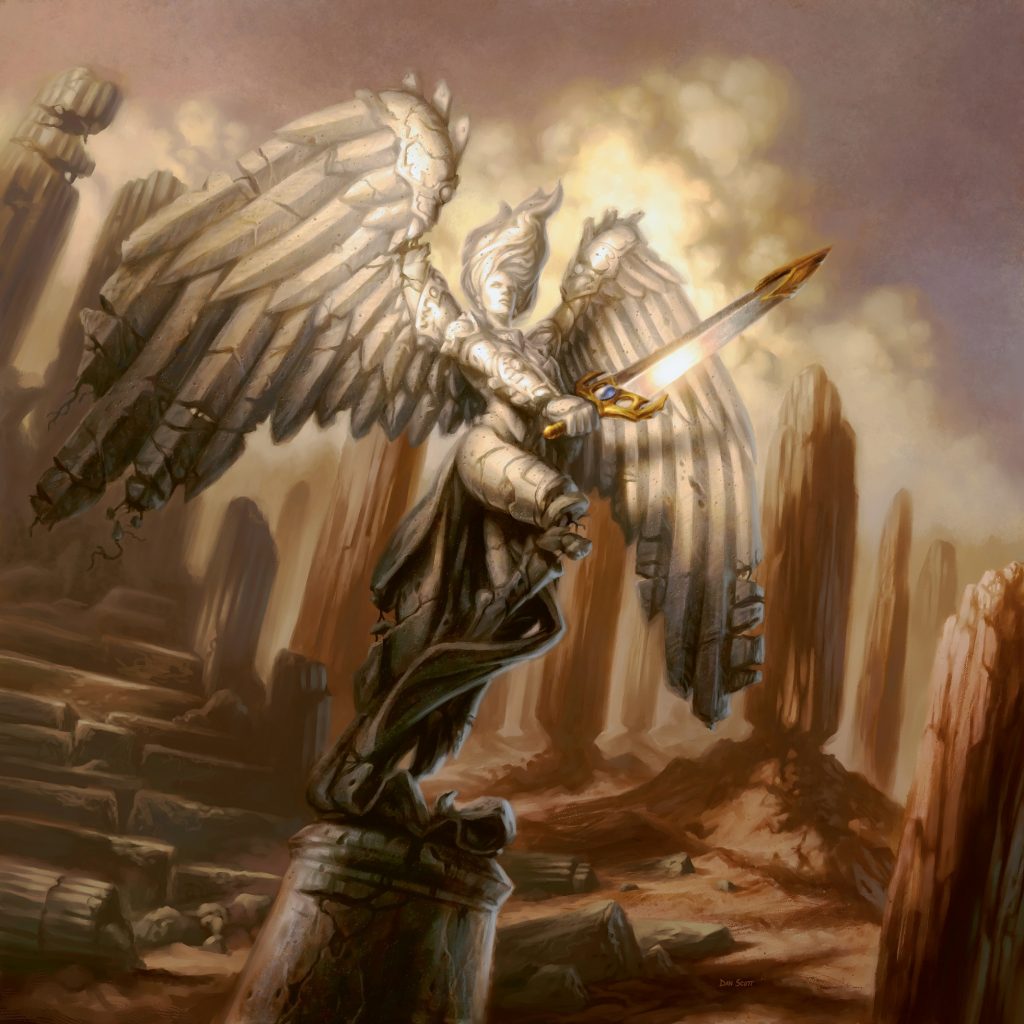
Akroma's Memorial | Illustration by Dan Scott
Free for All is a multiplayer format where players take turns, but they can interact or be interacted with by any other player in the game. Players can make alliances or temporary deals as they see fit. The last player alive is the winner.
Assassin
Assassin is a multiplayer format where players are randomly given a marker card and a target card. Each marker has a reciprocal target card somewhere on the table. You're only allowed to attack the opponent whose marker matches your target card. In the event where a player is dealt a target card that matches their marker, that play gets to be a rogue who can attack any other player.
You score points for defeating your target and you take on their target card as your new target when you do. You also score points for being the last player alive in a game. The player with the most points at the end wins.
Emperor
Emperor is a multiplayer format where two or more teams of three players face off with the goal of eliminating the opposite team's designated "Emperor."
The Emperor always sits in between the other players on their team. Players can only attack a player that is next to them. Emperors get a predetermined "range of influence" (ROI), dictating the number of players to their left or right in which they can use spells to interact with. All creature cards are given the "deploy" ability: ": Target teammate gains control of this creature. Activate this ability only any time you could cast a sorcery."
Otherwise, Emperor is played like any other MTG format. If an Emperor's life total becomes zero, they and their team are out. A team wins when all opposing Emperors are eliminated.
Canadian Highlander
The Canadian Highlander format has been a mainstay in Magic since its explosion outside of Canada. It has some of the most unique gameplay within the whole of MTG. The skill ceiling is higher than any other constructed format, but the floor is as low as you're able to go.
Each deck is allocated ten points to use to "buy" cards off of the points list, which allows the format to balance powerful cards. The list has a range of cards, from Vintage All-Stars to Legacy Sweethearts to the exiles of formats like Modern and Pioneer.
Oathbreaker
When it comes to MTG formats, Commander is way more popular than any other format. This also means that players can start to get bored and look for new ventures to spice things up. Sometimes they come up with different alternatives; Oathbreaker is one such alternative, and it's a pretty good challenger.
You have an "oathbreaker" instead of a commander, which must be a planeswalker. You still have a command zone and a color identity based on your oathbreaker, same as Commander, but there are two differences that significantly impact the game. First, you need to choose a "signature spell" along with your oathbreaker which can be sorcery or instant. Second, Oathbreaker's pace is somewhat quicker than Commander's: you start at 20 life and commander damage isn't applied. Your deck also consists of 60 cards instead of 100, so big guns are drawn much faster.
Limited
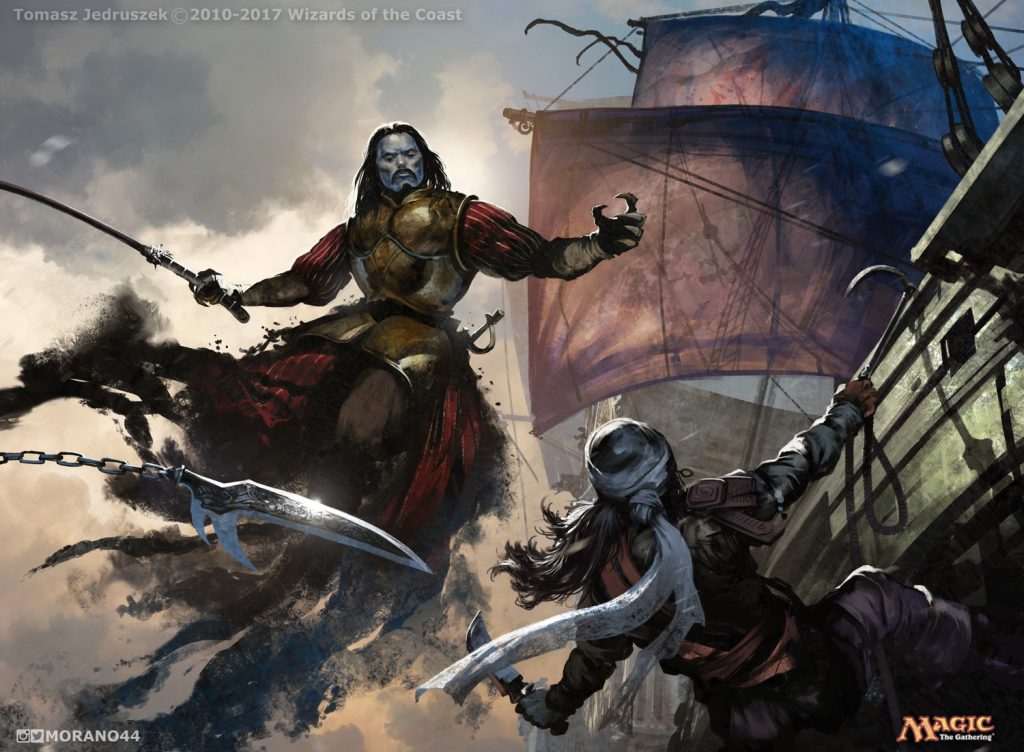
Skymarch Bloodletter | Illustration by Tomasz Jedruszek
Cube Draft
Cube Draft is a version of Draft where the card pool is a curated pool of cards, aptly named a "cube," commonly having only one copy of each card, with a minimum of 360 cards in the pool. Cubes are often an assortment of the most powerful cards throughout MTG's history, but they can have any theme the creator wants. Many players have personal cubes and there's a strong MTG Cube community. MTGO has annual Cube events that are widely loved by the community. Thankfully, MTGA now regularly runs Cube events as well.
Back Draft
Back Draft sees players try to draft a terrible deck which are then randomly distributed among the drafters. You get points for each time you win a game and each time the deck you drafted loses a game.
Rochester Draft
Rochester Draft is a version of Draft where one pack is laid out face up on a table. All players then take turns picking a card from the pack. This is repeated for the rest of the packs being used. The knowledge of what each player is drafting and how that influences the draft gives this format its own strategy and charm.
Winston Draft
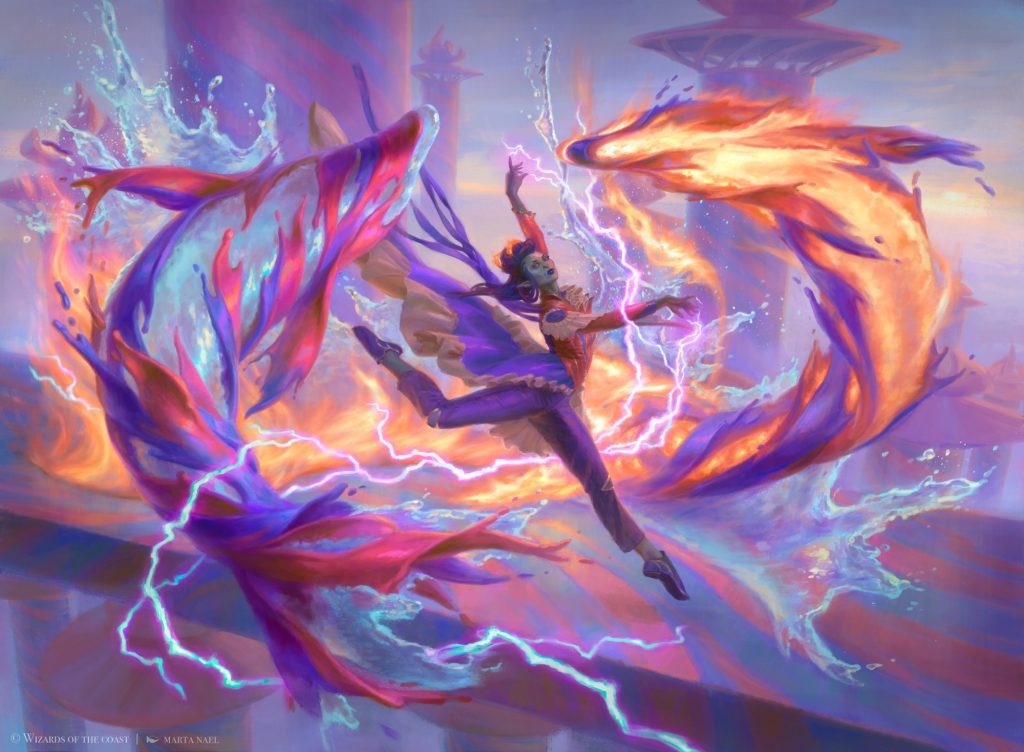
Elemental Masterpiece | Illustration by Marta Nael
Winston Draft, developed by Dr. Richard Garfield, is a version of Draft where players get to choose between variable stacks of unknown cards.
All the cards being used in the draft are shuffled into one large stack and three one card piles. The starting player looks at the first pile and decides whether or not to take it. If they don't, they take a card from the main stack and place it on the pile without looking at it. They then repeat this for the second and third pile. If they choose not to take the third pile, then they have to take the top card of the main stack. Once a choice is made, the turn passes. Players must decide between card quality or card quantity as the draft progresses.
When all cards have been drafted players, make the best deck from their pool.
Commander (Legends) / Commander Cube
Making its second appearance of the night, here's Commander again! With recent sets like Commander Legends, you can now build a Commander deck while drafting. You select a legendary creature from the pool and then build your deck around it following the same rules as a regular Commander deck. After that, you play with up to 4 players and the winner is decided based on votes rather than on who wins. The winner is given a point by default, though.
Or, you can play Cube with your Commander cards without buying anything new. Commander Cube is a delicious combination of limited and constructed — that go together like peanut butter and chocolate.
Pack Wars
If you like cracking packs and have some time to spare, all you need is a friend and a booster each. All you do is add three lands of each color to your booster and play following normal MTG rules.
Another way to play Pack Wars is to have your entire booster as a hand and add a land once a turn. Players play without libraries. Effects that say to draw a card don't happen, and there's no penalty for being unable to draw.
Wrap Up

Celestial Force | Illustration by Véronique Meignaud
Here's a summary of what we've talked about:
As you may have figured by now, the Magic scene is divided on both the paper and the digital scene with MTGO and MTGA.
In my personal opinion, MTGO has the vast majority of all sanctioned formats and you should give it a try if you're a Magic boomer. If you like visuals and animations, then Arena offers you a lot of those and also gives you a free-to-play option that heavily rewards you for being good at the game. The only limitation is that not all of the sanctioned formats are supported, but with the continued addition of new remastered and anthology sets, the card pool will start to look more and more like MTGO.
As far as paper Magic goes, the options are limitless. You can always craft the way you want to play it. Whatever your heart desires, as long as you have the cards or a way to get them, you're good to.
Thanks for getting here, and I'll see you in the next one! Who knows, maybe we'll even meet each other playing our favorite sanctioned or casual format!
Source: https://draftsim.com/mtg-formats/

0 Response to "Can You Offer Draw on Mtgo"
Post a Comment